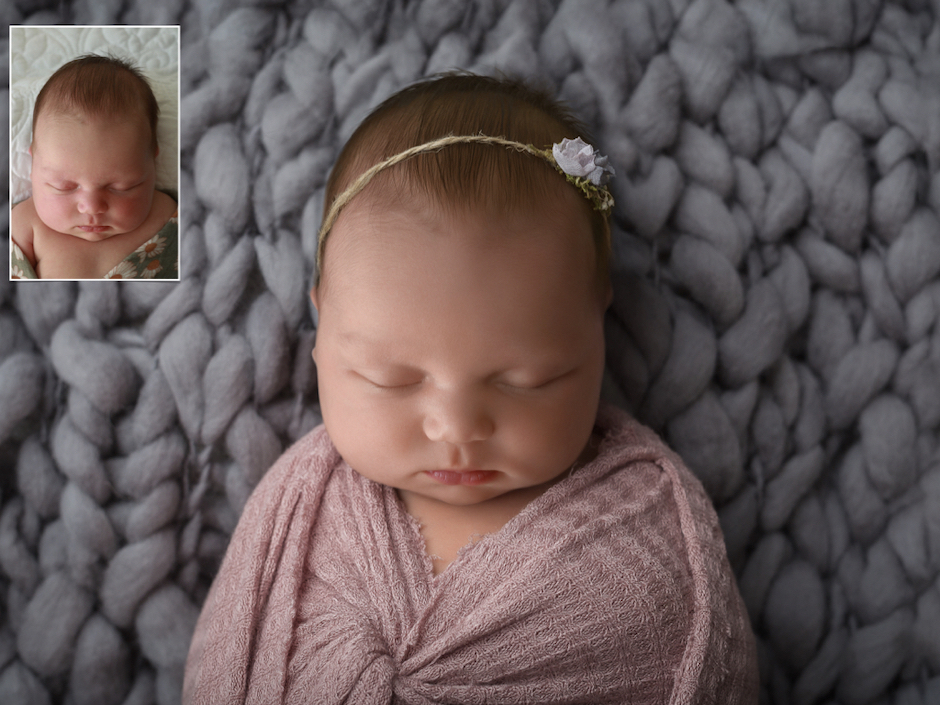Maternity + Family
Virtual Newborn Photography: One Duo’s Approach
March 19, 2021
Matt and Jessica Cramer tell us their "no-touch" virtual newborn photography business is booming. Here's how it works: The Cramers walk a couple through the process of getting a good shot of their baby’s face with just an iPhone (preferably an iPhone 11 or newer). Since the virtual photos are a face swap and parents are not trained in posing safety, the baby is always simply placed on his or her back (as in the inset image in the upper left corner here). Then Matt goes through archives of thousands of his past photographs to find a suitable “template” for the face swap (larger, final image shown here).
When COVID-19 shut down non-essential businesses a year ago, husband-and-wife newborn photography duo Matt and Jessica Cramer of Matt Cramer Photography were forced to temporarily cancel their scheduled, in-person newborn sessions and, they say, break many new parents’ hearts in the process. Fast forward to the addition of their current Newborn Photoshop Collection package where, using guided DIY iPhone photos from parents and a bit of Photoshop magic, the Cramers have been able to take their in-home newborn photography business virtual and this “no touch” business is booming.
[Read: The Next Natural Step: Branching Out From Wedding to Newborn Photography]
Matt Cramer had already been shooting newborn photography in Los Angeles for around a decade when the first COVID-19 shutdown hit. With Matt doing the camera work and Jessica serving as both business manager and baby whisperer, shutting down Matt Cramer Photography meant the family was left without any source of income.
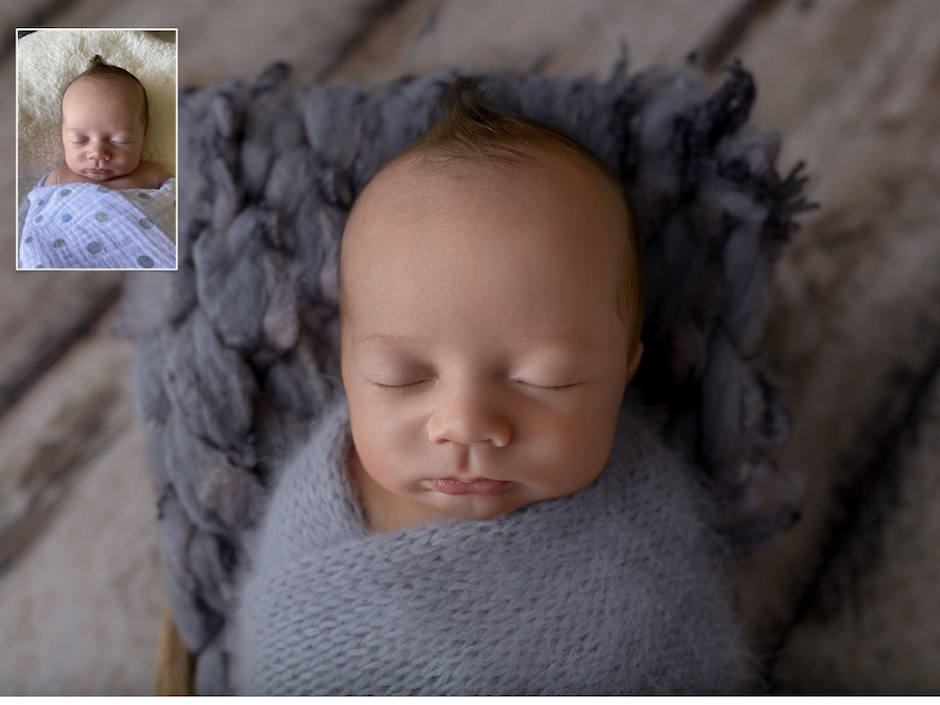
The photography duo looked to different online groups for ideas on what to do to keep the studio running safely. But with print labs closed, even offering a print sale wasn’t an option. Another photographer’s project creating set-ups with a baby doll, however, sparked an idea. “We were already doing face swaps to fix blinks in family photos. Why not use that same technique to create newborn photography virtually?” Matt and Jessica asked each other. And that’s exactly what they did.
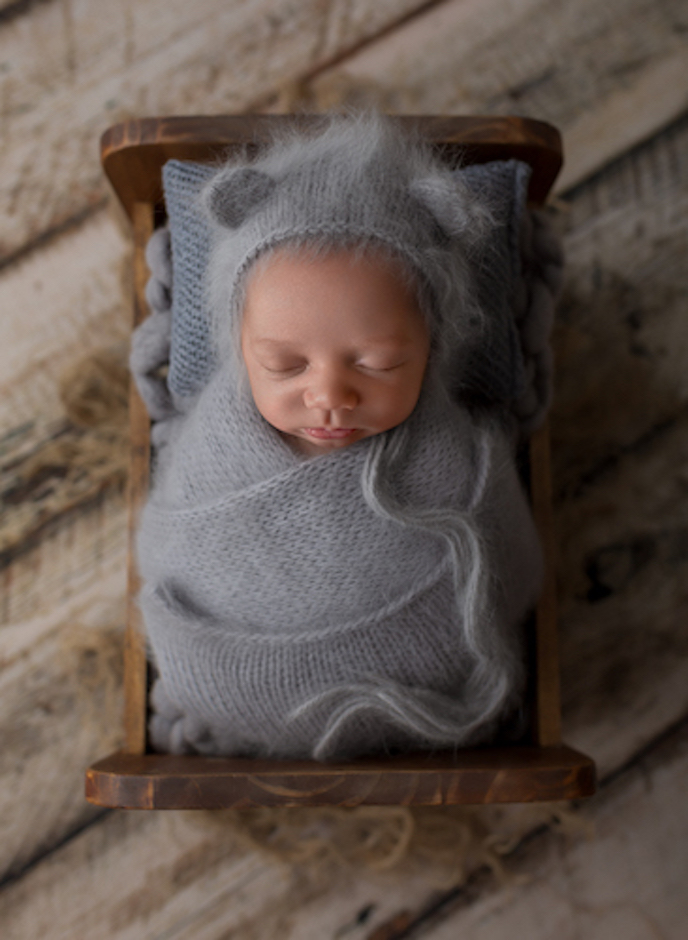
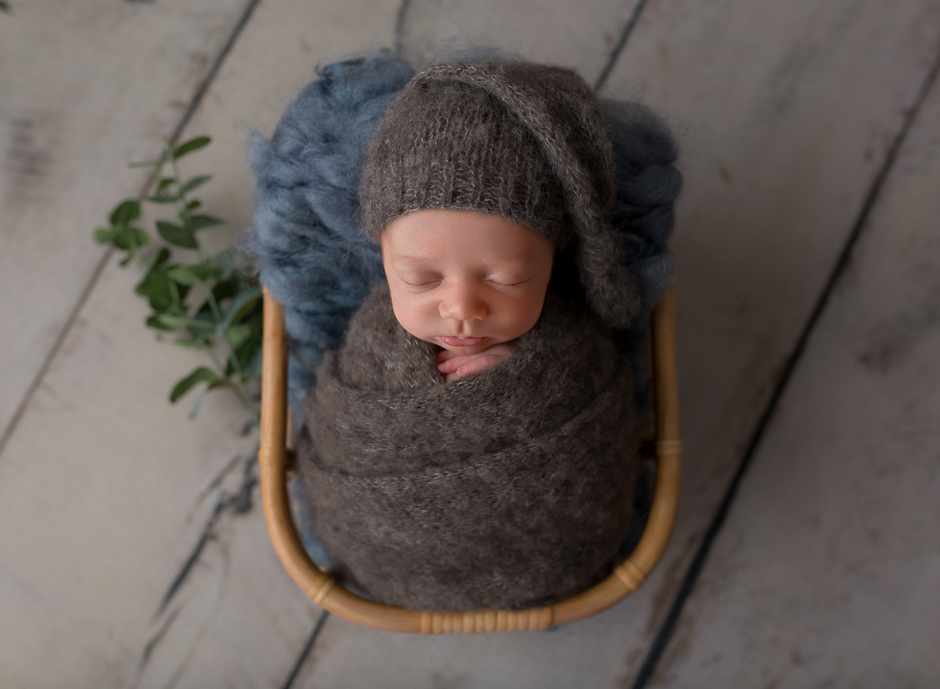
Here’s how the process works: The Cramers walk a couple through the process of getting a good shot of the baby’s face with just an iPhone (preferably an iPhone 11 or newer). Since the virtual photos are a face swap and parents are not trained in posing safety, the baby is always simply placed on his or her back. Through FaceTime and text messages, Matt walks the new parents through where to place the baby so that the light and camera angle is just right. Then, Matt goes through archives of thousands of his past photographs to find a suitable “template” for the face swap.
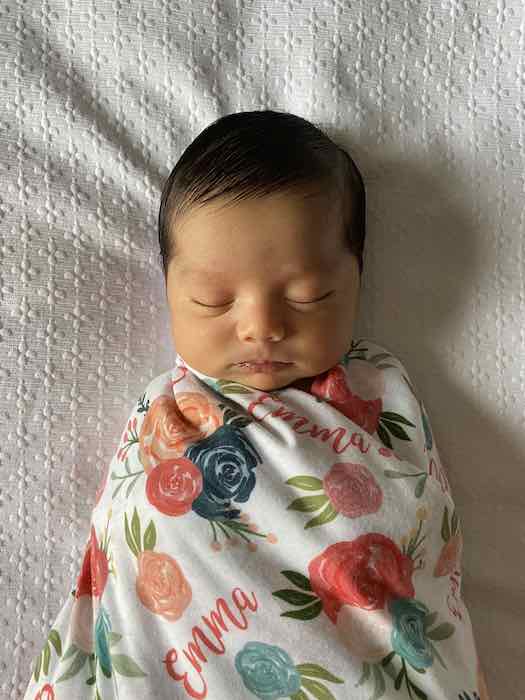
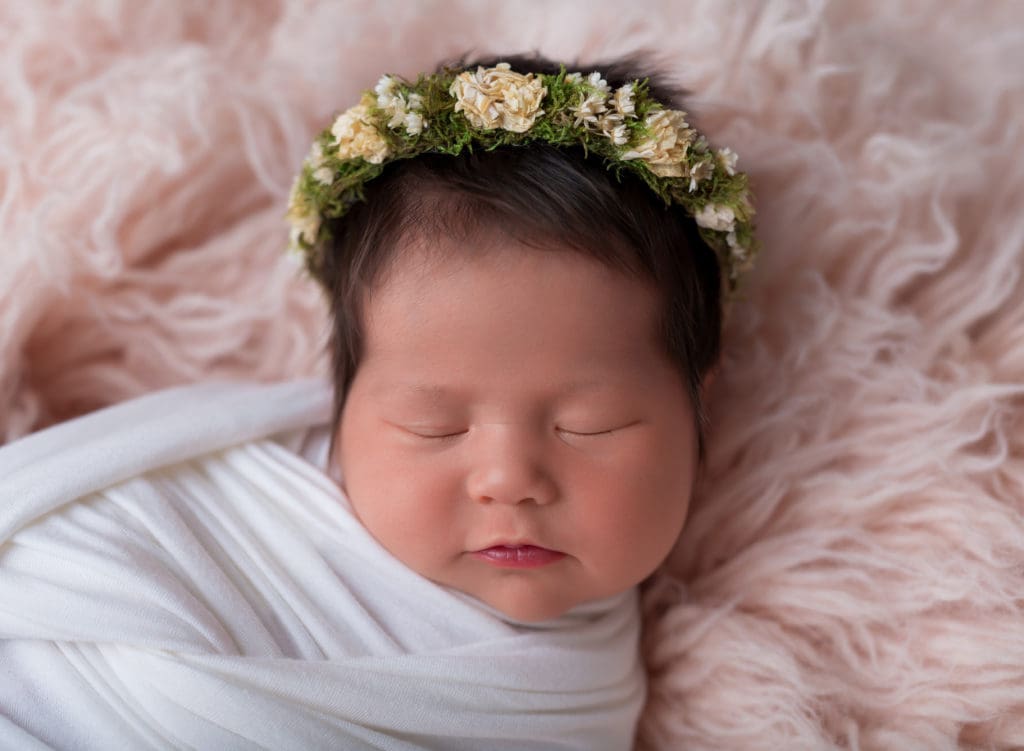
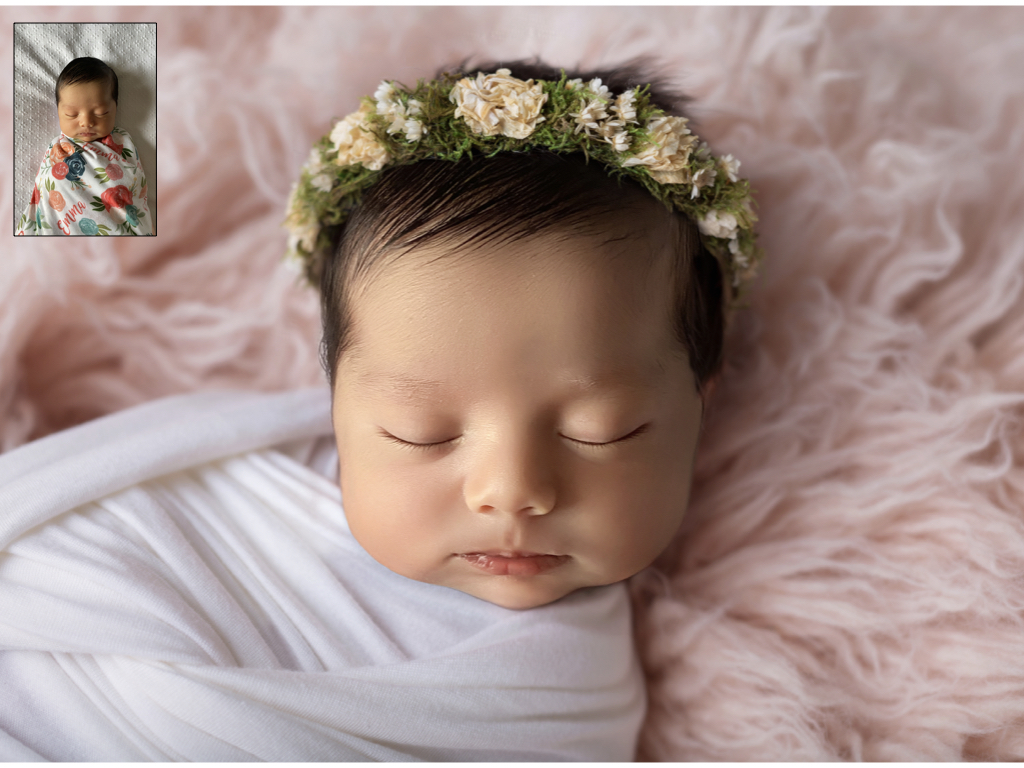
The Cramers do send clients preparation guidelines to follow, including the following on lighting tips and background choices:
- look around your home to locate the largest source of non-direct, natural window light where you can safely lay baby down close to. For example, a bedroom window with a bed close to it. North facing windows are ideal, however, NOT necessary. Most parents are using a bedroom window, but can be any room in your home where non-direct light will reach baby’s face.
- once you have located the best window light, try your best to cover up or close all other light sources in the room. For example, if you are using a bedroom window close the blinds on all other windows. Close all doors and turn off all lights and lamps. The idea is to only have light coming in from that one chosen window, with NO other competing lights.
- try for a solid, lighter colored blanket. Most parents are using a cream or white colored blanket/throw, so if you have something similar to lay baby on that ‘s great, but not necessary.
As great as virtual newborn photography sounds, they do come with a unique set of challenges. For one thing, the body in that photo, of course, isn’t actually the baby’s. The studio sticks with fully swaddled “templates” where only the infant’s face is showing. Those un-swaddled bare bum photos—and, of course, family photos (parents and/or siblings)—aren’t possible in this type of virtual set up. In the end, the Cramers deliver four finished photographs that have been fully Photoshopped, retouched and sent at high resolution via digital download within two weeks of the in-home photo submission from the parents.
[Read: 10 Questions for Kelly Brown: Newborn and Baby Photographer, Educator and WPPI Award-Winner]
While Matt says that the no-touch sessions would not have been possible with the technology from even five years ago, working with smartphone photos is still a challenge; older phones, Matt says, don’t provide the resolution or image quality that some of the newer phones can. “Meshing a photo taken by a parent with limited technical knowledge to a pre-existing image shot with a shallow depth of field can create its own challenges,” he explains. “It can sometimes take the parents a few tries to get the shots right.”
Many parents have told the studio that they can’t believe how realistic the no touch photos look. “Some moms said that they had given up on the idea of getting any professional newborn shots completely. This was the next best thing,” Jessica explains.
While the studio is now open with precautions, Matt Cramer Photography is continuing to offer the virtual sessions. The couple says that, while born out of necessity, the no touch approach still has some perks. The sessions are half the cost of the lowest price in-person option, which makes the studio accessible to more families. Geographically, the sessions can also be done from anywhere in the world. Virtual shoots also make newborn photos accessible to families who otherwise need to stay home, including cultures where the mom and baby don’t leave the home for 30 days.
The couple encourages other photographers in a similar situation not to limit the ideas to just what’s common in the photography industry. “You have to think outside the box,” Jessica said. “Even think outside the photography box. You have to look at businesses in different industries and see what they are doing to survive. When you get outside of the photography bubble, you can see what other businesses are doing and relate them to yourself.”

